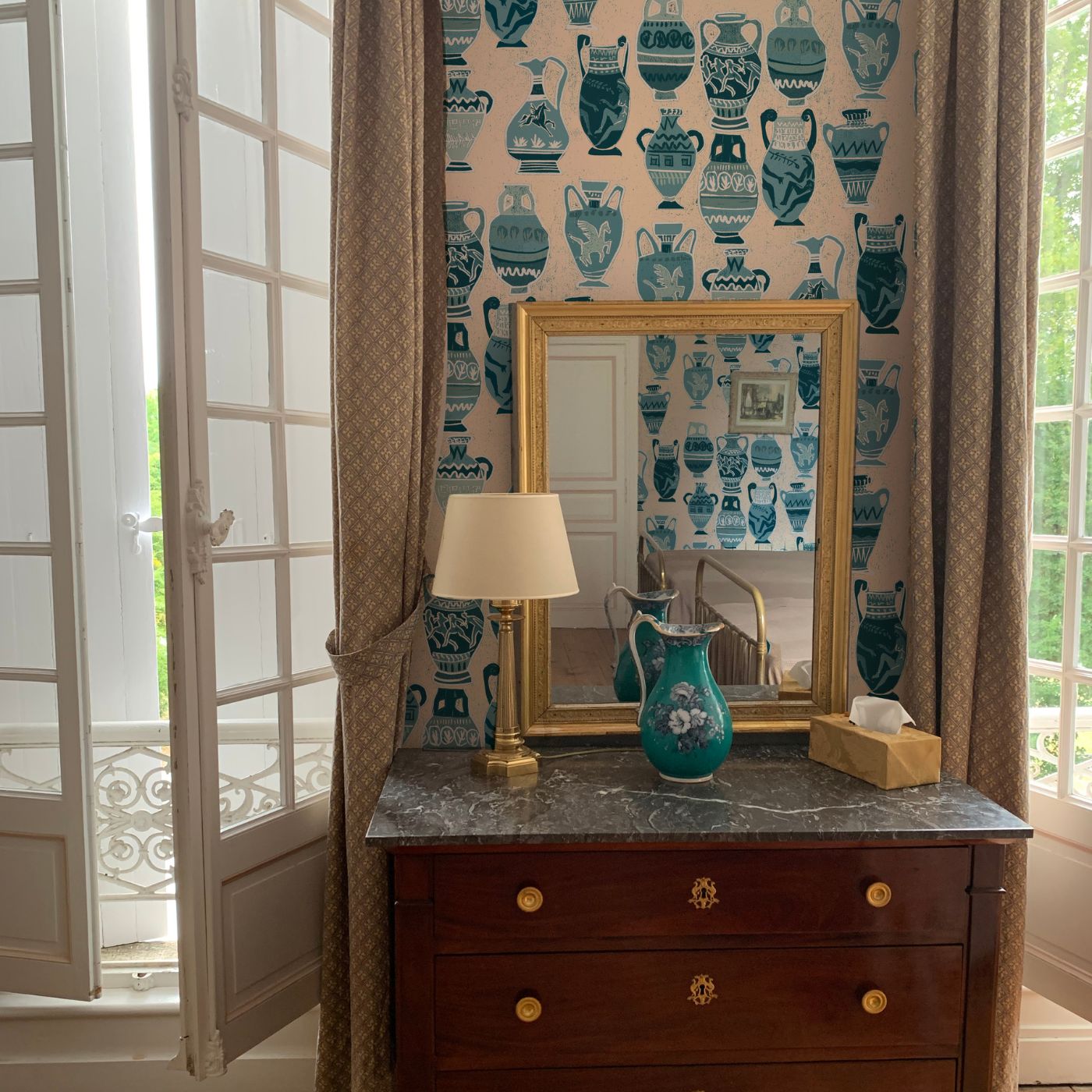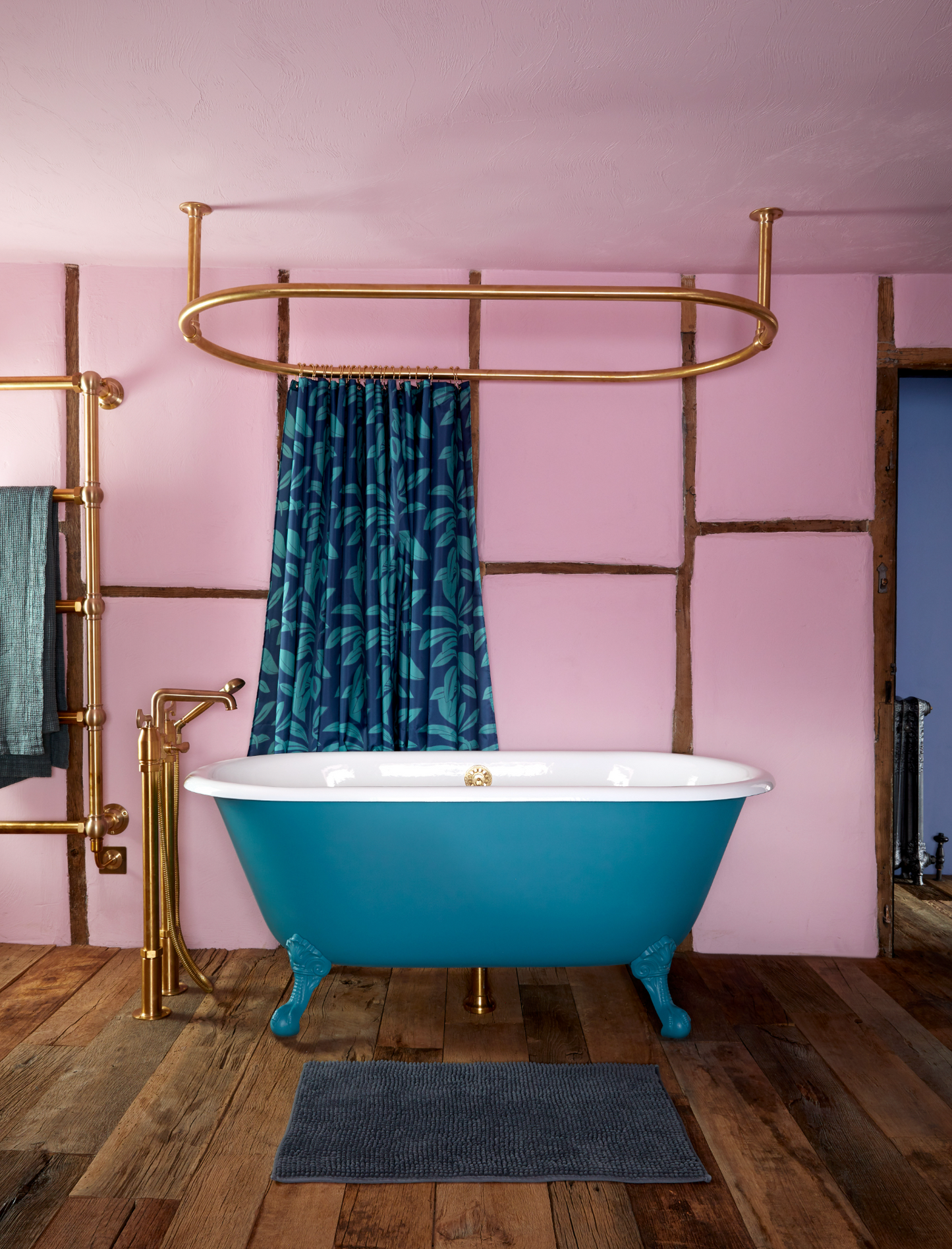
Colour is a power which directly influences the soul
- Wassily Kandinsky

How to introduce colour into your home.
Muted palettes can be great, however, it’s important to ask yourself why you’re painting that wall white or beige, is it a considered choice (in which case carry on!) or is it fear and a lack of confidence in using colour in the home? If it’s the latter - I can offer some tips on how to stylishly incorporate colour into your home, whether you are a confident colourist or a complete newbie!
Fixed elements
Take a good look at the elements in your home that you are ‘stuck with’ and note their colours, including their undertones. This can include flooring, countertops, wall tiles, carpentry and trim. You may have existing items of furniture that would you like to base the colour scheme around, or perhaps you’re starting from scratch.

Cohesive colour palette
Using a whole-house colour scheme throughout your home can help tie the different spaces together, yet still allow you to make individual rooms distinct from one another. A good rule is to choose 5 distinct colours to use in your home, including two neutrals. You can extend this however by using different shades of these colours, and by choosing different colours within your cohesive palette to dominate different rooms.

Starting Points
Using wallpaper as a starting point for a whole room can be a great way to hone in on a colour palette, as it will generally contain a dominant colour, secondary colour and accent colours, which you can use throughout the room, building the colours into walls, curtains, upholstery and accessories. There is a classic decor rule in interior design called the 60/30/10 rule, which means that you should divide your use of colour as follows: 60% for the dominant colour (emerald green in the Legless Birds of Paradise) 30% for a secondary colour (the pink) and 10% for the accent colour (e.g. blue for your accessories).

TIP: Using wallpaper for a whole room, or making a feature (or accent) wall, is a great springboard from which to’ scatter’ colour into the rest of your room.
Feeling & intuition
There is plenty of information available on colour psychology and the effect different colours can have on mood see my previous blog on this here but it’s also hugely important to trust your instincts as everyone will have unique reactions to different colours. Obtaining colour swatches and looking at existing interior room designs (lots to be found online) is a good way to understand your colour preferences and how they make you feel. A very simple way to start is by looking in your wardrobe to see what colours you’ve been drawn to for yourself!
Colour Wheel
A colour wheel is also helpful as it displays the relationship between colours.
 Complementary: colours that sit directly across from each other on the wheel. Complementary colours are usually pretty vibrant and can lack variety. If you want to add contrast to your complimentary palette try adjusting the hue and saturation of the colours.
Complementary: colours that sit directly across from each other on the wheel. Complementary colours are usually pretty vibrant and can lack variety. If you want to add contrast to your complimentary palette try adjusting the hue and saturation of the colours.
Split - Complementary: Uses three colours, a colour and two others that sit directly next to the first colours complement on the colour wheel. Split-complementary is similar to complimentary, however, it gives you more colours to work with.
Monochromatic: This colour scheme uses two or three colours from the same colour family on the colour wheel. Because monochromatic colour schemes are only one colour they create a very cohesive palette when paired with different tints and shades of the colour. This is a good option if you want to add colour to your design but you don't want it to be the main focal point.
Analogous: This colour scheme uses one colour along with the colours on either side of it on the colour wheel. Analogous colours are pleasing to the eye, however, they lack the contrast and vibrance a complementary colour scheme has.
Triad: This colour scheme uses three colours that are equally spaced from each other on the colour wheel. If you find the triad colour scheme you are using is too bright you can always bring down the saturation by mixing them with a grey colour.
TIP! Make sure to check how your colours look in both natural & artificial lighting before you commit.
Accessorise:
This is one of the most fun parts! Accessories are a great way to introduce colour into your home or to complement an already colourful home. Cushions, wall art, sculptures, ornaments, tapestry, rugs, throws, lampshades, tablecloths, runners, placemats, even books (colour-coordinating books on a shelf is extremely satisfying) all allow you to use your colour palette to tie the room together. Secondary and accent colours work particularly well as accessories.
TIP: Using monochromatic wall art (prints, paintings, photography) is a great way to provide contrast in colourful rooms.
You can shop Annika Reed Studio prints HERE.




